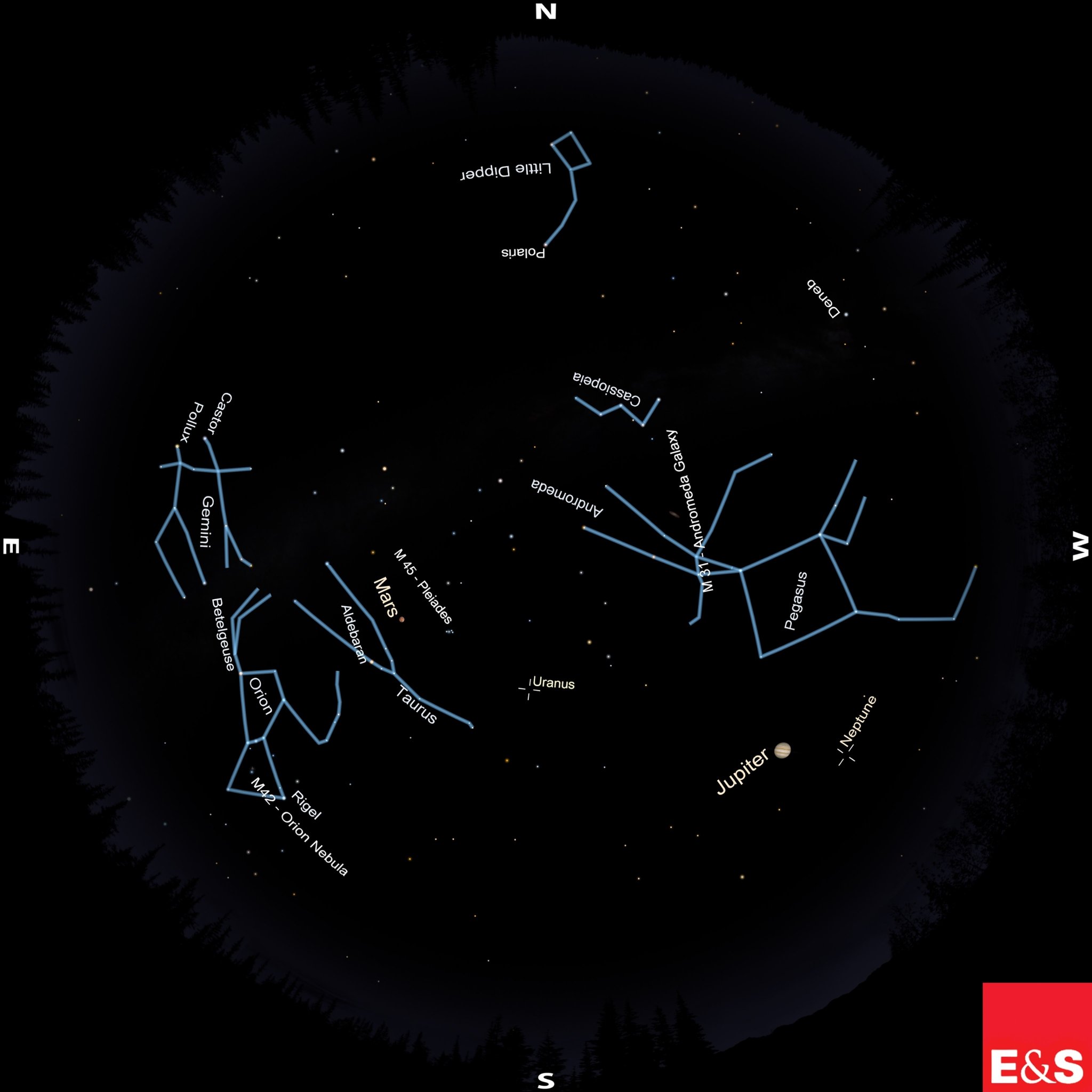What's in the Sky? January 2023
Winter has returned to the northern hemisphere bringing long nights perfect for stargazing. In January, the solar system is celebrating winter's return with a dazzling display of planets and a comet!
This month, Venus may steal the show, shining bright in the western sky after sunset. As the month continues, it will get higher and brighter until it reaches maximum brightness in early June. Look for Venus shining brightly at magnitude -4 in the constellation Capricornus, the Sea Goat. On January 22, Venus will meet up with the ringed giant Saturn in an event known as a conjunction. This close conjunction will bring the planets 21 arcminutes, less than half a degree, apart - close enough to occupy the same field of view through a telescope. We'll be viewing the event through our telescopes in a special Observatory Open House if the skies are clear.
Saturn remains visible in the western sky before sunset in January, setting about an hour and a half after sunset. Catch it before it disappears behind the Sun in late February.
Jupiter shines brightly in the southwest each evening, setting around 11 pm by the end of the month.
Bright Mars is visible in the constellation Taurus this month, visible most of the month. It will get dimmer over the winter as we speed past the red planet.
Astronomers remain hopeful that comet C/2022 E3 (ZTF) will brighten to naked-eye visibility by the end of the month. Currently at magnitude 9, the comet is visible through telescopes near Corona Borealis. It's predicted to reach 6th magnitude as it reaches perihelion on January 12 and may brighten to 5th magnitude by February 1st when it reaches perigee - its closest approach to Earth. If it brightens as much as predicted, it will be visible from dark skies without the aid of telescopes or binoculars in the early morning hours.
Keep your fingers crossed and your eyes on the skies for these great celestial sights!
